Hi how are you? Today’s topic is “Ikebana”, one of the Japanese culture “Cool Japan”, I would like to introduce it.
Have you ever wondered what is “Ikebana” (flower arrangement) and why it is so popular not only in Japan but also around the world?
I’d like to first pick about “Kadomatsu” (New Year’s pine decoration), however, before talking about Ikebana.

Because I’ve never known that Ikebana has something to do with Kadomatsu so far in my life.
Contents
Is “Kadomatsu” a source of happiness? What is the Japanese culture of inviting gods to “home”?
Kadomatsu is said to have been a Japanese culture since the Heian period (794-1185). Why is it good to decorate pine trees in the new year?
Kadomatsu is a traditional Japanese decoration that is placed at the entrance of homes and businesses during the New Year holiday.
It is made up of three pine trees, which represent longevity, bamboo, which represents strength, and plum blossoms, which represent resilience. Kadomatsu is believed to bring good luck and prosperity to the home or business.
What kind of thoughts should be put into Kadomatsu? We decided to reconsider Kadomatsu, and we interviewed Mr. Otsu, who is the chief priest of Jion-ji Temple and a flower arrangement instructor.

New Year’s Day is, in a very simple way, a “festival to welcome the gods.” However, unlike the festivals at shrines and in the community, it is a “home festival” to welcome the gods to your own home.
To invite the gods, you need a “medium” for the gods to dwell in. That’s Kadomatsu.
We express our gratitude for safely welcoming the new year and pray for a good harvest and peace. Therefore, it is good to think that we will also benefit from decorating Kadomatsu and welcoming the gods.
At that time, it is said that “ikebana developed from the custom of worshiping flowers and trees as a medium for gods.”
Our ancestors believed that gods dwell in all nature. Flowers, trees, mountains, rivers, etc. were considered to be “mediums” for gods, and they were worshiped as objects of faith. It is called “animism.”
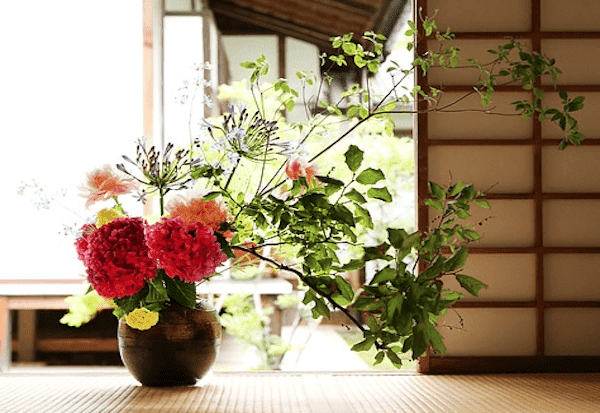
These days, we are more likely to reflect on our hearts while decorating Kadomatsu at the entrance of our house.
By expressing these thoughts in a visible form, our thoughts will deepen and our wishes will be easier to realize.
Kadomatsu is one way to do this. This year, how about putting your gratitude for the old year and your hopes for the new year into Kadomatsu?
The relationship between ikebana and kadomatsu is that both are expressions of Japanese culture and tradition.
Ikebana is a way of expressing beauty and meaning through flowers, while kadomatsu is a way of welcoming the New Year and praying for good luck.
What’s “Ikebana”, then?
Ikebana is a Japanese art of flower arrangement that has been practiced for centuries. It is a way of arranging flowers in a vase or container in a way that is both beautiful and meaningful.
It is often used to express emotions, such as joy, sadness, or gratitude. It can also be used to represent natural elements, such as the sun, the moon, or the seasons.
Ikebana means living flowers and it is the Japanese art of flower arrangement and also known as kadō (華道), which means the way of flowers Ikebana is not just a hobby or a decoration, but a way of expressing oneself through nature and beauty.
It had its origin in early Buddhist flower offerings and developed into a distinctive art form from the 15th century, with many styles and schools.
It also reached its first zenith in the 16th century under the influence of Buddhist tea masters and has grown over the centuries, with over 1,000 different schools in Japan and abroad.
It has a long history that dates back to the Heian period , when floral offerings were made at Buddhist altars over the centuries, Ikebana evolved into various styles and schools, each with its own philosophy and aesthetics.

Kakejiku(hanging scroll), Ikebana(flower arrangement) on the Tokonoma(alcove)
Some of the most famous schools are Ikenobō, Ohara, and Sōgetsu. Ikebana is considered one of the three classical Japanese arts of refinement, along with kōdō (incense appreciation) and chadō (tea ceremony)2
Ikebana is a true art form, like floral sculpture. Like any fine visual art, Ikebana design uses movement, form, lines, weight, color, space, shape, balance, and harmony to create an elegant and visually pleasing result.
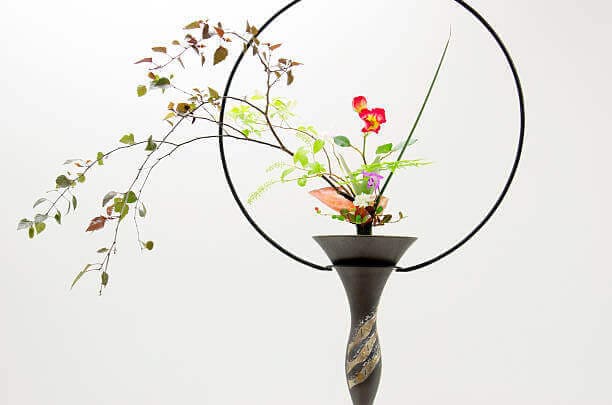
However, Ikebana sculptures are highly varied in appearance, size, shape, and color. There are no fixed rules or patterns to follow, but rather principles and guidelines that allow for creativity and individuality.
Ikebana artists use not only flowers, but also branches, leaves, grasses, fruits, and other natural materials to create their arrangements.
It is not simply used as a way to adorn altars in Buddhist practices; the floral arrangements themselves are rich with symbolism and the process of creating an Ikebana design is also regarded as a spiritual or meditative practice.
Ikebana artists try to capture the essence of nature and convey their feelings and emotions through their arrangements.
They also pay attention to the seasons, the environment, and the occasion for which they are making their arrangements.
It is a way of communicating with nature and with oneself.
How to learn it
If you are interested in learning more about Ikebana or trying it yourself, there are many resources available online and offline.
You can find books, videos, websites, blogs, magazines, and courses that teach you the basics and the advanced techniques of Ikebana.
You can also join an Ikebana club or association in your area or online to meet other enthusiasts and share your passion.
You can also visit museums, galleries, exhibitions, festivals, and competitions that showcase Ikebana works by professionals and amateurs alike.
It is a beautiful and rewarding art that anyone can enjoy and appreciate. It is a way of bringing nature into your home and your life. It is a way of expressing yourself and your personality. It is a way of living flowers.
There are many ways to start learning Ikebana, depending on your level of interest and availability. Here are some suggestions:
You can read books, magazines, websites, and blogs that introduce you to the history, theory, styles, and techniques of Ikebana.
For example, you can check out Ikebana: The Art of Arranging Flowers by Shozo Sato, a master of Ikebana who has been teaching for over 50 years.
You can watch videos and tutorials online that show you how to make basic and advanced Ikebana arrangements. For example, you can visit the YouTube channel of Ikebana Beautiful, which has over 200 videos on various Ikebana topics and projects.
You can join an online or offline course or workshop that teaches you the fundamentals and practice of Ikebana. For example, you can enroll in the online course of Ikebana Web , which offers lessons for beginners and intermediate learners with feedback and certification.

You can find an Ikebana teacher or mentor near you who can guide you through the process and help you improve your skills.
For example, you can search for an Ikebana instructor on the website of the International Association of Ikebana Teachers, which has members from over 40 countries.
You can join an Ikebana club or association in your area or online that connects you with other Ikebana enthusiasts and organizes events and activities.
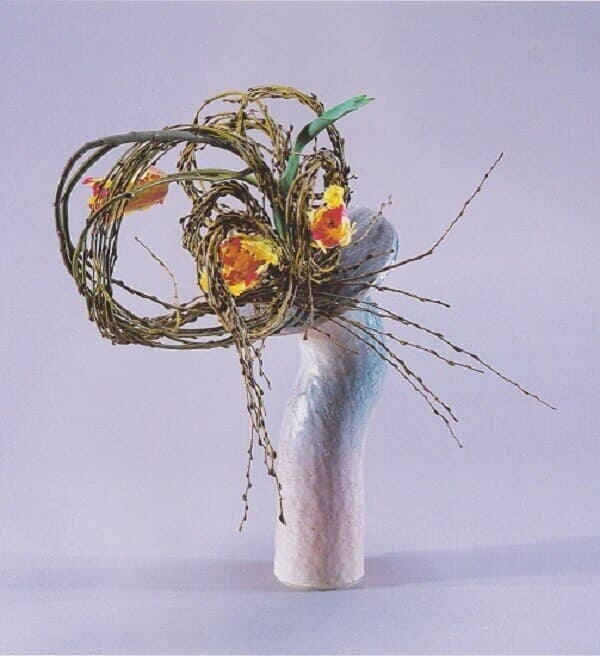
For example, you can become a member of the Sogetsu School of Ikebana , one of the most popular and modern schools of Ikebana that has branches all over the world.
I hope these suggestions help you start your journey into the world of Ikebana. It is a wonderful and rewarding art that can enrich your life and bring you joy.
I hope “Good luck with learning Ikebana”!
Finally, we have another “Cool Japan”, that’s “Kakejuku” “Hanging Scroll“, to be well-worth visiting, thanks

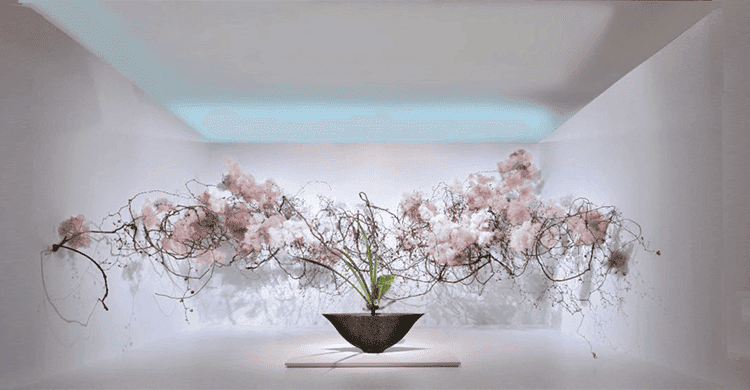





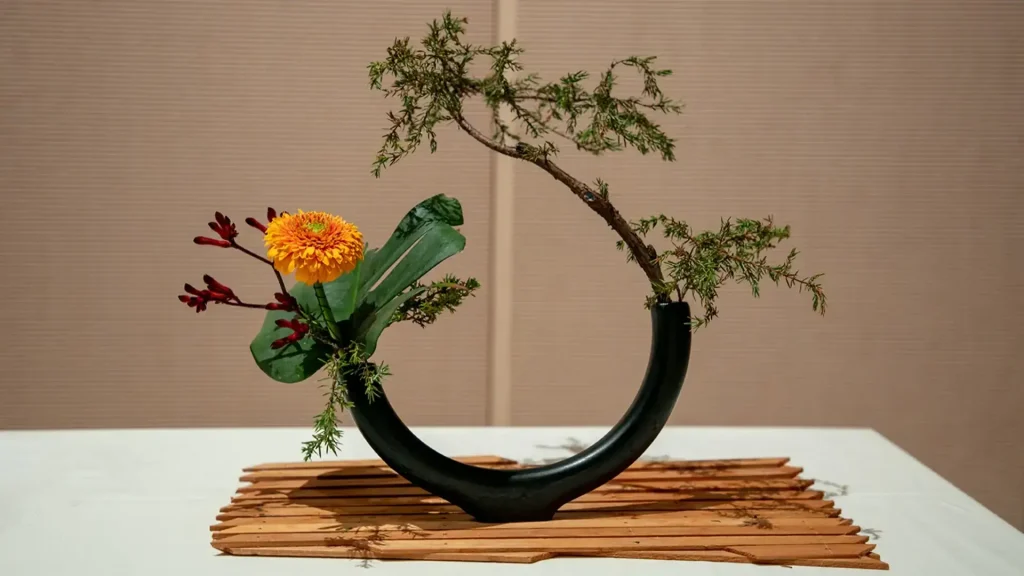


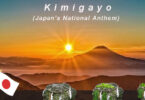




Leave a Comment